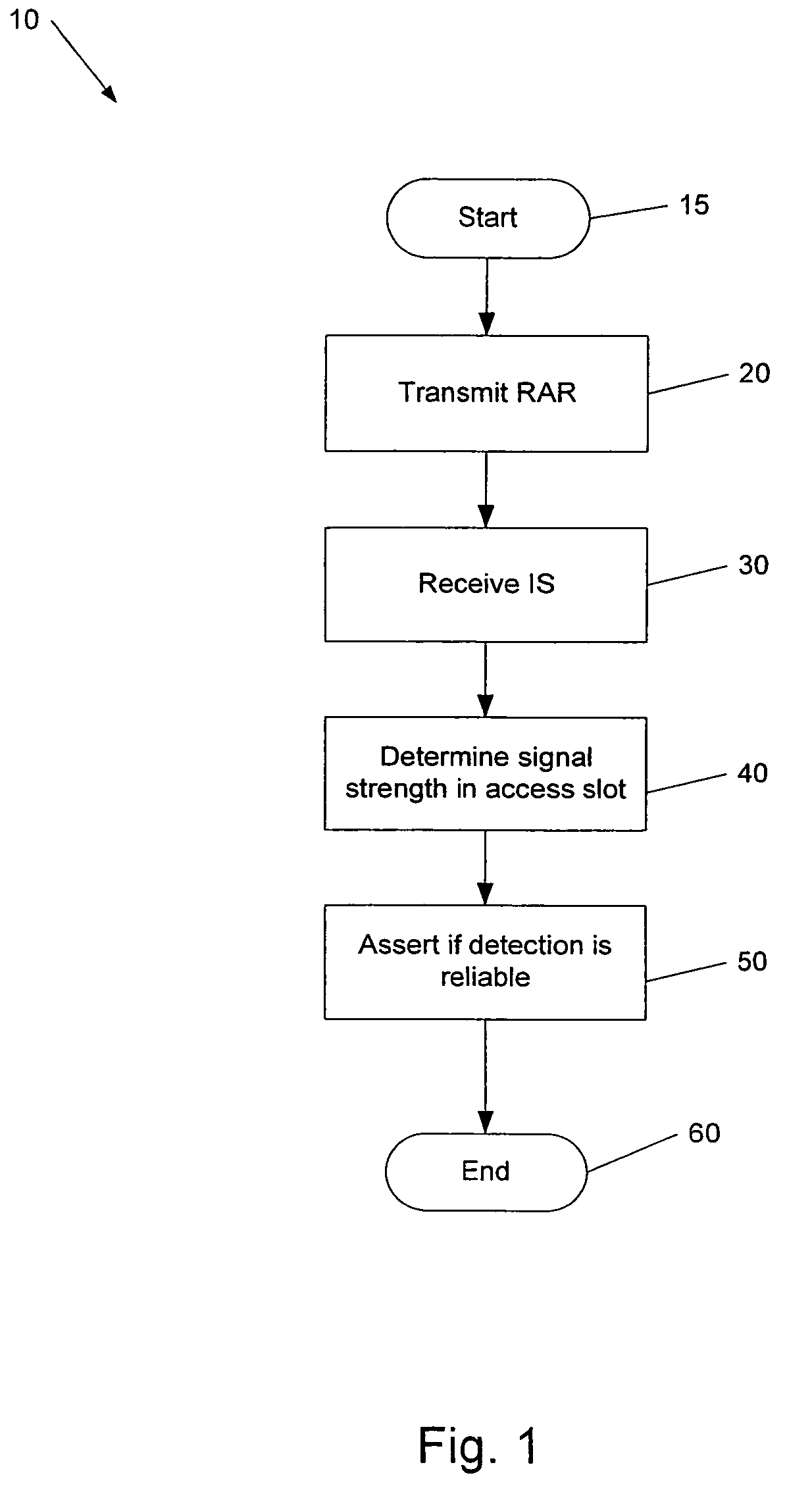Performance in mobile communications systems
a mobile communication system and performance technology, applied in the direction of network traffic/resource management, electrical equipment, security arrangements, etc., can solve the problems of large noise and interference, difficult to achieve low far and low mdr simultaneously, detections have noticeable fars, etc., to improve the performance of a random access mobile communication system, reduce the influence of noise and/or interference, and waste resources
- Summary
- Abstract
- Description
- Claims
- Application Information
AI Technical Summary
Benefits of technology
Problems solved by technology
Method used
Image
Examples
Embodiment Construction
[0029]The following description is given in relation to W-CDMA systems and the channels used therein as specified by the 3rd Generation Partnership Project, e.g. in the 3GPP document TS 25.214, version 5.9.0 (2004-06) and in the 3GPP document TS 25.211, version 5.6.0 (2004-09). However, it should be understood, that this is an example only and that the invention also could be employed in other systems.
[0030]FIGS. 1 to 3 show flowcharts of different embodiments of the method according to the invention. The alternative embodiments of the methods shown in FIGS. 1 to 3 are carried out in a user equipment.
[0031]FIG. 1 illustrates a method 10 of improving the performance of a random access mobile communications system by asserting whether detection in a user equipment of an indicator signal from a base station can be trusted. The method 10 starts in step 15 and continues to step 20, wherein the user equipment transmits a random access request (RAR), which comprises a preamble. In a W-CDMA...
PUM
 Login to View More
Login to View More Abstract
Description
Claims
Application Information
 Login to View More
Login to View More - R&D
- Intellectual Property
- Life Sciences
- Materials
- Tech Scout
- Unparalleled Data Quality
- Higher Quality Content
- 60% Fewer Hallucinations
Browse by: Latest US Patents, China's latest patents, Technical Efficacy Thesaurus, Application Domain, Technology Topic, Popular Technical Reports.
© 2025 PatSnap. All rights reserved.Legal|Privacy policy|Modern Slavery Act Transparency Statement|Sitemap|About US| Contact US: help@patsnap.com



